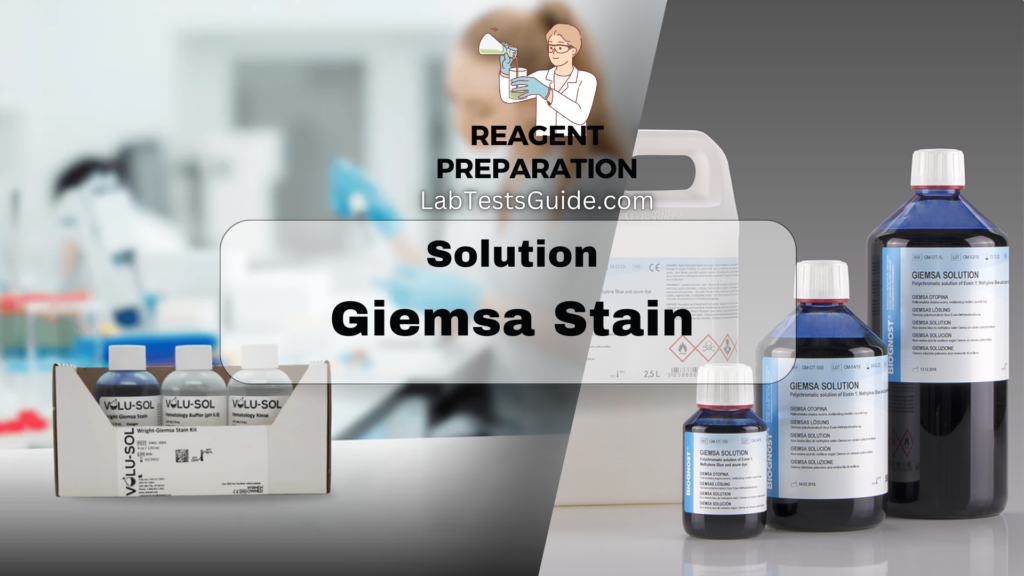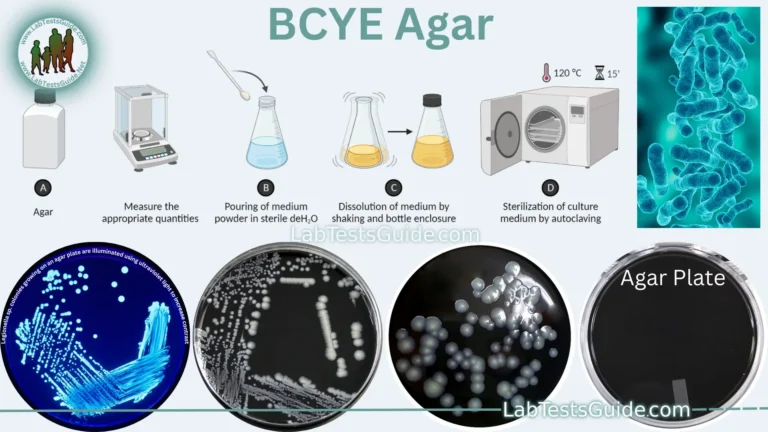Giemsa stain is a classic histological stain used for the visualization of cellular components, especially in blood smears and bone marrow samples. It is widely used in the diagnosis of various blood disorders and in the detection of parasites such as Plasmodium (the causative agent of malaria).

Giemsa stain was named after Gustav Giemsa, a German chemist and bacteriologist, who developed the stain in the early 20th century. He designed this staining technique by combining several reagents to effectively demonstrate the presence of parasites, particularly Plasmodium species, in malaria-infected blood samples. The stain’s ability to differentiate various cellular components, especially in blood and bone marrow smears, has made it a crucial tool in parasitology and hematology.
Uses of Giemsa Stain:
- Malaria Diagnosis:
- Stains blood smears to detect Plasmodium parasites, aiding in the diagnosis of malaria.
- Hematology:
- Stains peripheral blood smears to observe red blood cells, white blood cells, and platelets, helping diagnose blood disorders.
- Bone Marrow Examination:
- Used in bone marrow biopsies to study hematopoietic cells and diagnose conditions like leukemia.
- Parasitology:
- Identifies other protozoan parasites, such as Trypanosoma and Leishmania, in clinical samples.
- Bacterial Staining:
- Occasionally used for staining certain bacteria in histological sections, although less common.
- Chromosome Staining:
- Applied in cytogenetics to visualize chromosomes during metaphase, aiding in the identification of chromosomal abnormalities.
Composition of Giemsa Stain:
| Component | Quantity |
|---|---|
| Giemsa powder | 3.8 g |
| Glycerol (glycerine) | 250 ml |
| Methanol (methyl alcohol) | 250 ml |
This table summarizes the amounts needed to prepare 500 ml of Giemsa stain.
Preparation of Giemsa Stain:
- Weigh Giemsa Powder:
- 3.8 g of Giemsa powder into a dry 500 ml bottle with glass beads.
- Add Methanol:
- Measure 250 ml methanol, add to the bottle, and mix well.
- Add Glycerol:
- Measure 250 ml glycerol, add to the mixture, and mix well.
- Dissolve the Stain:
- Heat in a water bath at 50–60 °C (or 37 °C if unavailable) for up to 2 hours, mixing periodically.
- Label and Store:
- Label as “Flammable” and “Toxic.” Store in the dark at room temperature.
- Filter Before Use:
- Filter a small amount into a dry container before use.
Precautions:
- Methanol Handling: Methanol is toxic and highly flammable. Handle with care, use in a well-ventilated area, and keep away from open flames.
- Avoid Water Contamination: Prevent any water from entering the stain solution during preparation or storage to avoid spoilage.
- Proper Labeling: Clearly label the container with “Flammable” and “Toxic” to ensure proper safety precautions are followed.
- Storage Conditions: Store the stain in a dark place at room temperature to maintain its stability and effectiveness.
- Use of Protective Equipment: Wear appropriate protective gear (gloves, lab coat, and safety goggles) when handling chemicals.
- Handling and Mixing: Ensure thorough mixing and avoid prolonged exposure of the stain to heat to prevent degradation.
- Disposal: Follow proper disposal protocols for hazardous materials when discarding any waste or expired stain.
Uses of Giemsa Stain in Clinical Laboratories:
- Malaria Diagnosis: Identifies Plasmodium parasites in blood smears.
- Hematology: Evaluates red and white blood cells, and platelets in blood smears for diagnosing disorders.
- Bone Marrow Examination: Assists in diagnosing conditions like leukemia by staining bone marrow samples.
- Parasitology: Detects protozoan parasites such as Trypanosoma and Leishmania.
- Chromosome Analysis: Used in cytogenetics for visualizing chromosomes and detecting abnormalities.
Possible References Used







